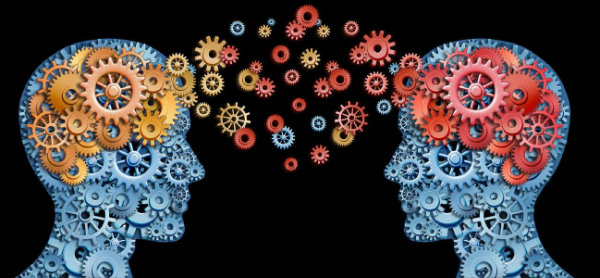Le Kanban ou « l’intention d’amélioration continue » comme le décrit David J. Anderson, est souvent introduit par ses 6 pratiques fondamentales et ses 4 principes fondateurs. Mike Burrows, auteur de l’excellent Kanban from the inside, nous offre une toute nouvelle perspective en tentant d’identifier les valeurs derrière la méthode. Avec son accord, je vous propose ci-après la traduction de l’article qui a émergé de cette réflexion.

Les introductions à la Méthode Kanban tendent à commencer par une description du mur de cartes kanban (un outil) et mènent à la description de ses pratiques fondamentales. Si vous êtes chanceux, vous pourrez même avoir droit à ses principes fondateurs.
Ici, j’ai tenté une approche différente, une qui donne un poids équivalent à la fois aux principes (qui je crois devraient venir en premier – ils ne sont pas appelés « fondateurs » pour rien) et aux pratiques fondamentales en identifiant les valeurs qui les étayent. En faisant cela, on couvrirait l’essentiel des principaux éléments de la méthode et peut-être que cela marcherait aussi comme cadre d’enseignement ?
Indépendamment, le résultat est holistique (les valeurs sont largement applicables à de nombreux niveaux), ce qui reste vrai pour l’objectif de Kanban de guider un changement organisationnel évolutionnaire, et aide à adresser trois fausses idées :
- que Kanban est en quelque sorte un processus de développement logiciel
- que Kanban n’a pas en son cœur le type de valeurs qui vont à la fois challenger une organisation et guider ses agents du changement, et
- que Kanban est seulement pour les statisticiens dans des organisations orientées contrôle (j’exagère juste un peu cette dernière fausse idée)
De plus, j’espère aussi démontrer qu’une description basée sur les valeurs est utile pour d’autres raisons, plus constructives.
Mon point de départ

Dans la séquence habituelle des Principes Fondateurs de Kanban, j’identifie 4 valeurs : la compréhension, l’accord, le respect et le leadership. La première nécessite une petite justification mais les trois autres peuvent être lues directement dans les principes comme ils sont typiquement formulés.
Les valeurs derrière les 6 Pratiques Fondamentales sont un peu plus délicates, pas parce qu’elles ne sont pas là mais parce que la correspondance n’est pas exactement du un-pour-un. J’ai choisi un autre groupe de 4 (cela fait 8 jusque là) : la transparence, l’équilibre, le flux et la collaboration. Cependant, même si j’ai trouvé cela utile de partir de cette séquence évidente, je fus obligé d’en ajouter une – la focalisation client – ce qui fait 9 au total.
Comme je m’étends sur chacune d’entre-elles, nous découvrirons quelques candidates de plus à inclure – je surlignerais en gras tout ce qui ressemblerait à une valeur (noms abstraits, typiquement). Ces dernières cependant sont moins importantes, moins axiomatiques, moins « fondamentales ».
Les 9 valeurs fondamentales de Kanban
1. Compréhension

La Compréhension est l’une des valeurs les moins évidentes de Kanban. Je l’ai lue dans le premier principe fondateur, « Commencer là où on en est« . Comprenez ce que vous êtes en train de changer, que ce soit des petits détails d’un processus ou la manière dont il réagit en conditions de stress, ou encore quelque chose d’aussi abstrait que l’approche globale du changement de votre organisation.
Insistez sur la compréhension car un processus sain qui ne peut se défendre lui-même est un signe que vous avez oublié ce en quoi vous croyez.
The Process Myth, Rands in Repose
Dans notre formation Kanban, nous enseignons une approche tirée de la Pensée Systémique qui place la compréhension très haute dans notre liste de priorités. Elle est bien là dans nos introductions à la méthode, à la base du tout premier exercice de cours. D’où vient le travail ? Qu’est ce qui caractérise les différents types de travaux ? Quelles approches aux problèmes de changement et d’amélioration tendent à réussir ou à échouer, à la fois généralement et spécifiquement dans votre organisation ? Pour quelles raisons ?
Par définition, l’absence de compréhension est ce qui caractérise les implémentations du culte du cargo. Même avec de bonnes intentions, il y a une probabilité pour que la compréhension soit perdue lorsque le changement est dirigé top-down, pauvrement justifié (en comptant trop sur l’intérêt des best practice par exemple) et passé sans réflexion entre les couches organisationnelles. C’est sans surprise donc que les projets de changement ont une tendance à décevoir. Malheureusement pour le manager paresseux ou incompétent, la compréhension et ses valeurs associées d’apprentissage et d’alignement exigent de l’effort.
2. Accord

L’Accord est là, dans le second principe fondateur : « Accepter de poursuivre un changement incrémental, évolutionnaire« . J’aime tourner cela autrement : est-ce que vous vous attendiez raisonnablement à réussir dans l’implémentation du changement sans cela ? Se pourrait-il que ce soit le manque d’accord qui limite votre progression ? Ou peut-être y-a t’il une sorte d’accord mais pas suffisamment profond – vous êtes d’accord sur l’existence d’un problème mais pas sur ses impacts ou ses causes (voir compréhension) ?
Ce principe semblerait suggérer une autre valeur, celle de l’incrémentalisme. J’éviterais cependant de décrire cela comme une valeur fondamentale, pour la simple et bonne raison que nous promouvons le changement incrémental et évolutionnaire parce-qu’il a une grande chance de réussir, pas parce-que ses alternatives dans le radicalisme ou le conservatisme n’en sont jamais de meilleures. Et si le pragmatisme est une valeur, cela en est une bien glissante.
3. Respect

Le « Respect pour les personnes » est un pilier du Lean. Kanban applique cela au problème du changement organisationnel dans son troisième principe : « Initialement, respectez les rôles actuels, les responsabilités & les titres de poste« .
Comme dans la vie, le respect est un bon guide pour implémenter le changement. Cela augmentera t’il vos chances de réussite si vous commencez par insinuer que les personnes font du mauvais travail, que leurs rôles sont inutiles ? Probablement pas. Est-il utile de supposer de mauvaises intentions ? Encore, probablement pas. Mais est-ce que le respect veut juste dire « être gentil » ? Encore une fois, non :
Montrer du respect aux personnes ne veut pas dire que vous devez les aimer, être en accord avec leurs visions, et arrêter de challenger leurs raisonnements à demi-mesure.
Ce type de respect demande du courage, ce qui nous emmène à notre prochaine valeur.
4. Leadership

Le leadership apparaît dans la plupart des histoires à succès mais c’est seulement en 2012 qu’il a été ajouté en tant que principe fondateur, sous la forme de : « Encourager les actes de leadership à tous les niveaux dans votre organisation – du contributeur individuel au senior management« .
Beaucoup de choses ont été écrites sur le leadership et je ne vais pas en rajouter ici sauf pour émettre quelques observations rapides :
i. Vous pourriez désirer un autocrate – un Steve Jobs (ou un Steve Ballmer) peut-être – mais le leadership du type « à tous les niveaux » est quelque chose de différent.
ii. Même si le leadership est quelque chose à estimer, le management n’est pas à dédaigner de manière inhérente non plus. (vous vous rappelez du respect ?)
iii. De plus, ni le leadership ni le management n’écarte l’auto-organisation, où les individus, équipes et systèmes ont la capacité de s’adapter sans direction centralisée.
iv. Un bon leadership implique du challenge (nous avons déjà utilisé ce mot). En tant qu’agents du changement, nous devons être préparés à la fois au challenge et à être challengés.
5. Flux

En nous tournant vers les pratiques, nous commencerons par la troisième : « Gérer le flux ».
La partie gestion de cette pratique parle de l’organisation tactique et de la prise de décision ayant pour objectif de faire progresser le travail vers un résultat optimal (efficacité). A un certain niveau – bien qu’avec des degrés de réussite variés – cela est universel.
Le Flux ajoute quelque chose de moins commun, un sentiment de régularité et de prédictibilité; adresser les impedimenta à ces dernières de manière systématique est une approche d’amélioration puissante, illustrée dans le Lean.
Nous estimons aussi le flux au sens Csikszentmihalyi, cet état très positif d’absorption totale dans ce que nous faisons. Ce type de flux est difficile à trouver lorsque la distraction, l’interruption et les changements constants de priorité dominent l’environnement de travail.
6. Focalisation Client

Nous n’en avons pas encore fini avec « Gérer le flux » ! Une version étendue de cette pratique pourrait ressembler à :
Gérer pour une complétion en temps voulu le flux régulier de valeur reconnue par le client sur une variété d’échéances
Valeur est utilisé autant dans le sens de but (en comprenant le « pourquoi » des clients) que dans le sens monétaire (en prenant soin de ne pas confondre l’utilité avec le simple coût). Une préoccupation de complétion orientée client signifie d’aller au-delà de la « tâche terminée » centrée sur l’activité ou du « produit potentiellement livrable » centré sur le produit. Dans mon expérience, c’est un concept étonnamment ambitieux dont l’impact peut être considérable.
Un travail terminé mais qui ne bénéficie pas encore au client n’est que du coût irrécupérable. Nous reviendrons à ce problème et adresserons la partie « sur une variété d’échéances » lorsque nous regarderons la valeur Equilibre.
7. Transparence

La Transparence renforce 3 des pratiques fondamentales de Kanban :
- la première : « Visualiser [le travail]«
- la quatrième : « Rendre les règles du processus explicites«
- et la cinquième (un autre ajout de 2012) : « Implémenter des boucles de feedback« .
Kanban crée de la transparence à plusieurs niveaux :
i. En rendant le travail visible
ii. En rendant visible les flux dans lesquels passent les éléments de travail et les états occupés par les vrais éléments de travail à chaque instant
iii. En rendant visible les paramètres, règles et contraintes qui guident la prise de décision et au final dirigent la performance globale du système
iv. En rendant visible l’impact de tous les éléments ci-dessus dans les mesures de performance orientées client.
Les 2 premiers types de visibilité viennent naturellement des systèmes kanban d’après lesquels la méthode Kanban a été nommée. Les 3 premiers ensemble créent des points de leviers – points dans nos systèmes où un changement significatif peut être effectué pour un coût ou un effort relativement faible. Le 4ème (une boucle de feedback) nous dit que le changement nous emmène dans la bonne direction.
Kanban est ainsi une manière de faire évoluer des systèmes qui apprennent et s’adaptent, une stratégie pour les organisations pour trouver une plus grande justesse dans les écosystèmes compétitifs qu’elles habitent.
8. Equilibre

La seconde pratique fondamentale est « Limiter le travail en cours (WIP) ». Limiter le WIP dans un processus a plusieurs bénéfices :
- Grâce à la Loi de Little, les Lead Times (et donc les cycles de feedback) tendent à se raccourcirent; le client est satisfait plut tôt et l’apprentissage s’accélère.
- Le travail commence seulement lorsque la capacité devient disponible. Cela crée un flux de la perspective des éléments de travail et garde le stock et la demande en équilibre de la perspective de l’équipe ou du travailleur. (respect !)
- Avec juste un petit extra de raffinement, nous pouvons facilement trouver l’équilibre entre différents types de travaux opérationnels et entre le travail opérationnel et le travail d’amélioration.
Ce dernier point suggère un autre principe : « Adoptez la variété ». Les systèmes qui se comportent bien avec la variété peuvent être décrits comme ayant une résilience qui est bonne autant pour le client, l’organisation et le travailleur; un autre exemple d’équilibre. L’aide de Kanban à faire évoluer les systèmes résilients pouvant donner une prédictibilité à une variété de types d’éléments de travail dans une gamme de perspectives de performance (échéances allant peut-être de quelques heures ou jours à quelques mois ou plus) est vraiment une fonctionnalité mortelle.
Pour en savoir plus sur le rôle de l’équipe dans Kanban, voir la conférence David Anderson s’intitulant Quand Kanban n’est pas approprié [video(eng)][slides(eng)]. Ma conférence Kanban à la dure [video(eng)][slides(eng)] inclut une exploration de la variété et de la résilience.
9. Collaboration

La Collaboration se présente dans la 6ème (et dernière) pratique fondamentale : « Améliorer collaborativement, Evoluer expérimentalement [en utilisant des modèles [et la méthode scientifique]]« .
En s’appuyant sur l’accord, le respect et la focalisation client, la collaboration crée la perspective que nous allons regarder au-delà de nos propres frontières d’équipe en adressant les impedimenta du flux.
La version complète de cette pratique (avec les deux parties optionnelles incluses) parle de travailler systématiquement de manière à améliorer la compréhension par l’observation, la construction de modèles, l’expérimentation et la mesure (empirisme).
« En utilisant des modèles » a un deuxième sens qui suggère les valeurs de curiosité et même de générosité. Kanban encourage activement ses praticiens à regarder en dehors de la méthode dans un ensemble de connaissances grandissant. Kanban reconnaît ses racines dans le Lean, la Théorie des Contraintes et l’Agile, ses fondations dans la théorie des files d’attentes et la science de la complexité, ses influences comme diverses comme le Lean Startup et la thérapie familiale. Les praticiens individuels ont leurs propres modèles favoris – je m’appuie par exemple sur le A3, GROW et Influencer.
Pourquoi s’arrêter à 9 ?

Cela m’a ennuyé que la valeur Lean de la focalisation client ne puisse pas être inférée de manière évidente dans la formulation standard des principes fondateurs et des pratiques fondamentales de Kanban – vous pourriez dire que j’ai dû tricher ! Bien que je pense qu’elle mérite entièrement sa place.
C’est moins le cas pour ces autres valeurs que j’ai identifiées :
- L’apprentissage et l’alignement ont de fortes associations avec la compréhension. Je reconnais entièrement que ces dernières pourraient faire grand cas mais je suis parti sur celle que je pense reflète le mieux les racines de Kanban dans la Pensée Systémique. Mon article le plus récent met en avant l’apprentissage, alors ce fût difficile !
- Le challenge (aussi vision) et le courage se chevauchent suffisamment avec le leadership pour que je ne les considère pas comme axiomatiques. Voir l’article lié Dole out the 3C’s.
- L’auto-organisation se classerait haute comme valeur de conception organisationnelle mais le respect semble être un guide adéquat pour un agent du changement. Toutes choses égales par ailleurs, le respect préférerait une solution permettant ou s’appuyant sur l’auto-organisation plutôt qu’une autre qui ne le ferait pas.
- La résilience se présente fortement dans ma pensée mais elle décrit un résultat plus qu’une approche. La régularité et la prédictibilité de même.
Mettons les valeurs au travail

Voyons donc nos 9 valeurs ensemble :
Compréhension, Accord, Respect,
Leadership, Flux, Focalisation Client,
Transparence, Équilibre, Collaboration
Certes, c’est une liste plutôt longue – plus longue que les 3 ou 4 valeurs initiales que j’avais citées à plusieurs reprises pendant un certain temps – mais pas aussi longue que l’on serait incapable d’en débattre, de s’en rappeler ou de s’y référer.
Est-ce que certaines d’entre-elles résonnent avec vous plus fortement que d’autres ? Qu’est ce que cela signifie pour vous ? J’explorerais cela à un leadership retreat – les différences entre praticiens seront révélatrices !
Est-ce que certaines vous semblent manquantes dans votre environnement actuel ? Encore une fois, qu’est ce que cela signifie pour vous ? Est-ce que cela vous suggère que des choses ont vraiment besoin d’être rectifiées ?
Par exemple, je peux me rappeler des moments où le manque du bon type d’accord avait soit ralenti le rythme du changement soit résulté en un changement pouvant revenir en arrière trop facilement. De ce que je lis, je ne crois pas être unique dans ce cas.
Réflexion

J’ai rendu des valeurs explicites – c’est la transparence en action – créant une opportunité de challenge (c’est-à-dire que j’aimerais voir la focalisation client apparaître plus explicitement dans la méthode fondamentale), et augmentant ma compréhension d’au moins une source d’inefficacité.
Que vous ou plus largement la communauté choisissiez les mêmes valeurs est une question intéressante digne d’une exploration de groupe. Comment feriez-vous différemment à ce sujet ? J’adorerais voir d’autres tentatives. Les valeurs que j’ai choisies pourraient-elles bénéficier d’une structure additionnelle ou d’une séquence différente ? Ou est-ce que les valeurs sont si fragiles qu’elles valent mieux de ne pas être exprimées ?
Prolongeant une ligne de pensée commencée il y a quelques mois dans un article « De quelle profondeur est votre Kanban« , les valeurs pourraient-elles fournir une meilleure fondation pour un outil d’évaluation Kanban de seconde génération ? Est-ce que la mise en valeur des pratiques de l’outil actuel ne cacherait pas le véritable objectif de la méthode ? Je pense vraiment que cela pourrait être le cas.
A savoir si c’est une bonne manière d’introduire le Kanban, nous ne pourrons le savoir qu’en le testant. C’est ce que j’ai l’intention de faire !
A voir aussi
Un article sur un atelier sur les valeurs Kanban par Christophe Keromen sur le blog de coactiv






